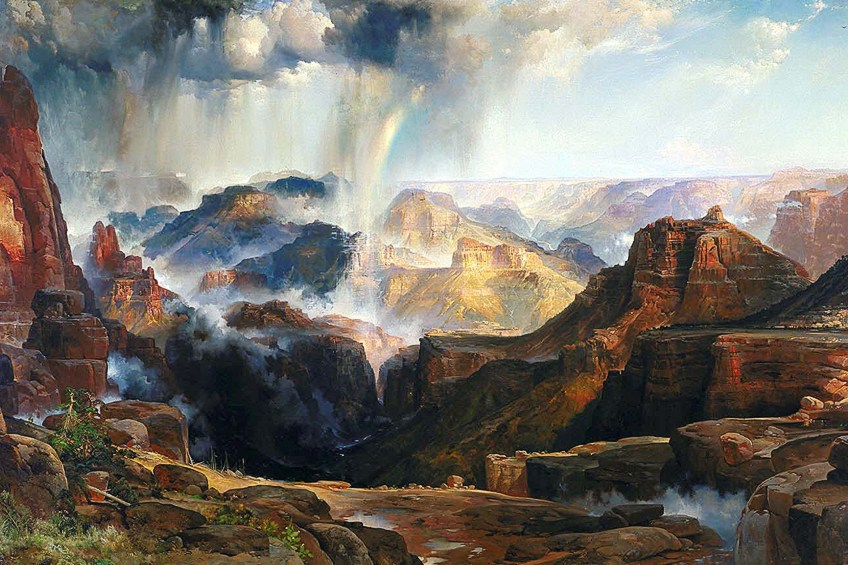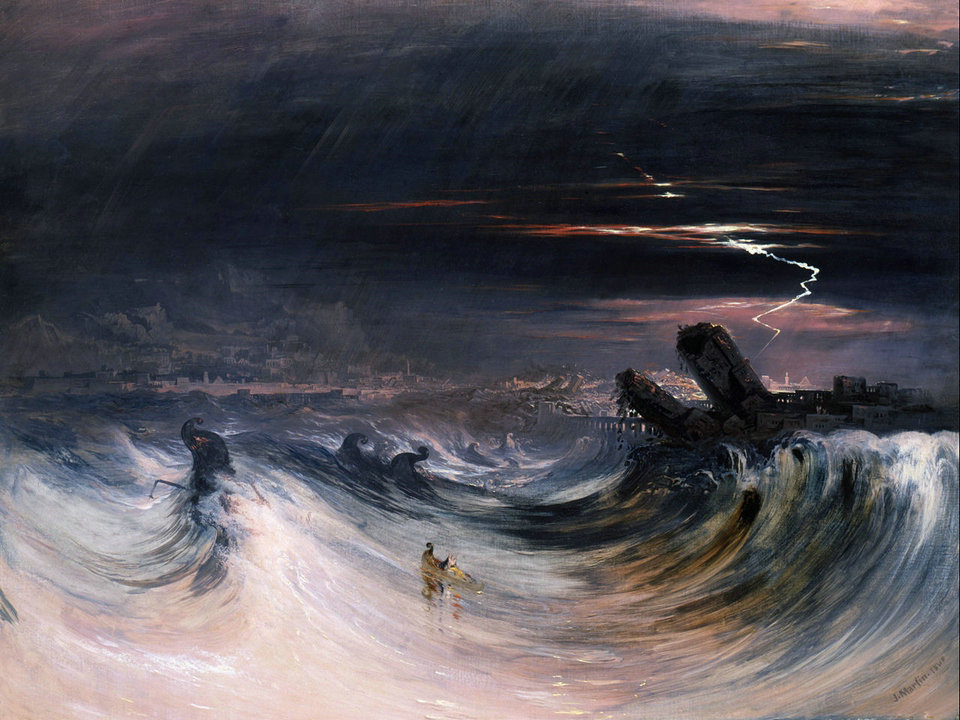The late 18th/19th century
“Romanticism is precisely situated neither in choice of subject nor in exact truth, but in a way of feeling.” – Poet and critic Charles Baudelaire, 1846
The rise of Romanticism prompted the rise of landscape art. Romanticism is an artistic and intellectual movement that originated in Europe that characterized literature, music, painting and architecture. This movement contained attitudes of a deepened appreciation of the beauties of nature. This movement brought a new view of upon artists, believing that their creative spirit is more important than adhering to strict rules and procedures. This emphasized imagining a gateway to a transcendent experience and spiritual truth whilst having an obsessive interest with folk culture, looking at the exotic, mysterious and even the satanic. This movement emphasized the individual, the irrational, the transcendental and the spontaneous.
This movement originated in Western Europe in the 18th century during the cultural movement of Neoclassicism, inspired by the aesthetics of ancient civilisations; valuing order, self-control and promotes ideal values. Romanticism contradicted this, focusing on instinct rather than reason. The German poet Friedrich Schlegel defined ‘romantic’ as literature depicting emotional matter in an imaginative form”. In each separate culture across Europe this was interpreted differently. In England, William Turner was one of the artists at the head of this movement, painting surreal yet chaotic landscapes where he would blur areas of his work to give the impression of dream vs reality. In France, the artist is usually a failed poet, their work misunderstood and rejected in majority of society acting as a detached observer to express feelings freely. However in Spain, Francisco de Goya used a genre of ‘dark romanticism’, full of anxiety, imaginary and insanity, typically consisting of characters facing demons. This speaks out for how the romantics in this period did not hide from their suffering anymore but turned it into a source of imagination to inspire.



This was during the era of the Industrial Revolution where machinery and factories were constantly being built, so the interest in landscapes grew due to the lack of them and how they began slowly disappearing. These landscapes preserved the nature in time during this period. Romanticism offered an escape from the stresses of the early Industrial Revolution as it was a place of urbanization and consumerism, trying to show how nature is more important and powerful compared to mankind. After the French Revolution in 1789, François-Auguste-René, vicomte de Chateaubriand, and Madame de Staël were the chief initiators of Romanticism, by virtue of their influential historical and theoretical writings. This was a response towards the disillusionment within the values of reason and order, explaining why this movements key principles were emphasizing imagination and emotion. Such explorations of emotional states extended into the animal kingdom, marking the Romantic fascination with animals as both forces of nature and metaphors for human behaviour.

The Sublime
The sublime played a part within Romanticism, discovered within the natural world’s wild and mysterious expanses. This was a concept that was beautiful and awe inspiring however to contrast, it could be terrifying due to the potential darkness in the image. Through paintings, romantic artists explored this by using the fluidity of their imagination however these could turn to nightmares with mysterious tones to them.
The theory of sublime art was put forward by Edmund Burke in ‘A Philosophical Enquiry into the Origin of our Ideas of the Sublime and Beautiful’ published in 1757. He defined the sublime as
‘an artistic effect productive of the strongest emotion the mind is capable of feeling’.
The sublime was used to evoke emotion within the viewer, giving them and experience of self-forgetfulness through nature or natural events. For example, Caspar David Friedrich’s paintings typically infused mist, fog and darkness to convey an experience of the infinite, leading to the viewer feeling an overwhelming sense of emptiness.


